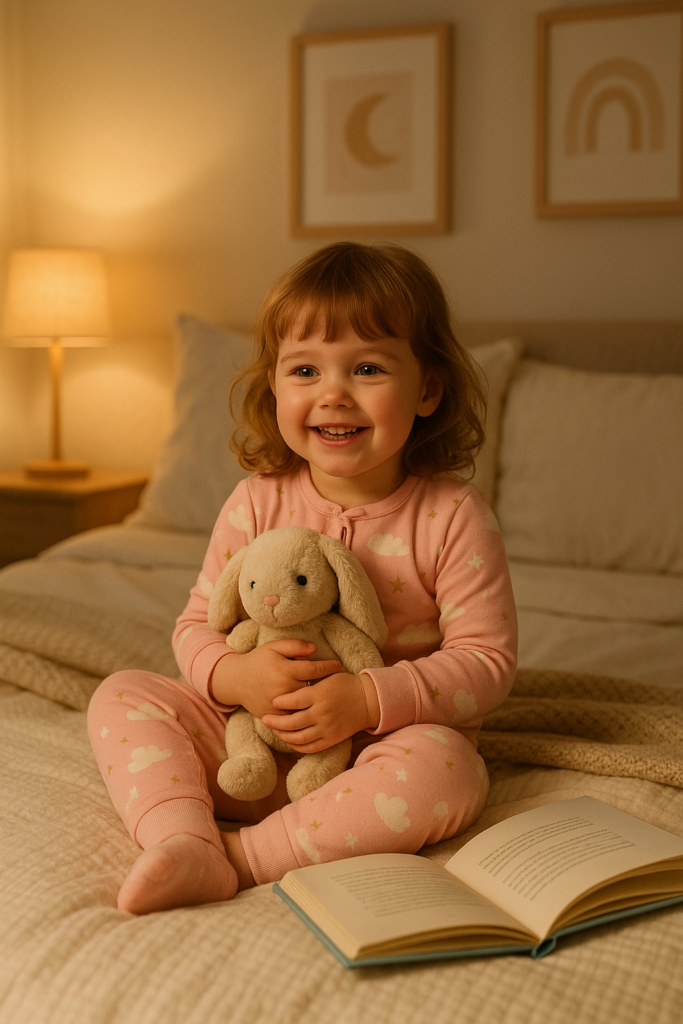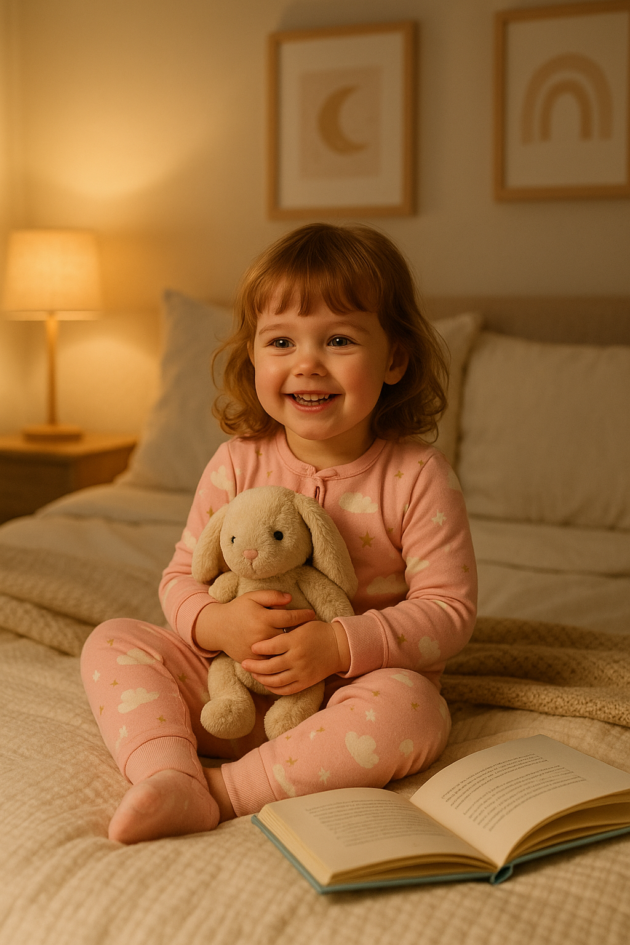Table of Contents
Introduction
Establishing a consistent and calming bedtime routine is crucial for young girls’ health, happiness, and sense of security. When a reliable evening ritual is part of your child’s day, it not only signals the end of waking activities but also marks a time for family togetherness and relaxation. A predictable routine can contribute to improved sleep quality, greater emotional stability, and a much stronger family bond. One simple yet often overlooked way to support restful nights is by making sure your child feels truly comfortable, right down to what she wears to bed, such as cozy baby girl sleepers. Carefully chosen sleepwear helps regulate body temperature and enhances a sense of security. When paired with a gentle and deliberate nighttime process, the difference it makes in your child’s sleep quality and demeanor can be profound. This comprehensive guide will help you design a bedtime routine that’s enjoyable, soothing, and perfectly tailored to your child’s unique needs. Whether you’re starting from scratch or looking to fine-tune your existing evenings, you’ll find expert tips and practical steps to make bedtime a breeze for your family—every night. Read on to discover how a thoughtful approach can transform the way your child transitions into sleep.
Set a Consistent Bedtime
Creating and maintaining a regular bedtime is one of the most effective ways to help your child get enough quality sleep. Most school-aged girls need between 9-11 hours of sleep each night to support their growth, learning, and mood regulation. Pick a bedtime that allows for this window and aim to stick with it every night, including weekends or holidays, so your child’s body clock remains steady. Consistency trains your child’s internal clock, making it easier for her to fall asleep and wake up without difficulty or crankiness. When bedtime routines remain steady, bedtime battles and stalling tactics tend to decrease over time, reducing stress for everyone. Establishing a regular sleeping schedule also makes mornings more peaceful, since your child will be better rested and less resistant to waking up. Be patient initially—sleep transitions can take a while for young children to adjust to, but the benefits are worth it.
Create a Calming Sleep Environment
It is important to ensure your daughter’s sleep space is peaceful and inviting to encourage deeper sleep and more pleasant nights. Keep her bedroom cool, ideally between 65-70°F, and minimize sources of noise or distraction. Blackout curtains can help block out exterior light, especially during summer months when the sun sets later. For children who are easily startled or soothed by gentle sounds, a white noise machine or soft lullabies can help mask disruptive noises. Pay attention to her comfort—offer a supportive mattress and pillows that suit her sleep preferences, and include favorite items like a special stuffed animal, soft nightlight, or cozy blanket to boost her sense of security. Pictures or calming wall art can also make the room feel more like a safe, enjoyable place to unwind. The environment in which your child sleeps can greatly affect how quickly she drifts off and how restful her sleep will be—so don’t underestimate the impact of small details.

Incorporate Relaxing Activities
Winding down before bed sets a clear signal to both mind and body that it’s time to transition to sleep. The last hour before bed should be filled with activities that comfort and calm, rather than excite or stimulate. Try routine activities such as reading a gentle story together—for many families, this creates a treasured bonding moment. Alternatively, you might listen to quiet music, complete a simple puzzle, or practice deep breathing or gentle yoga stretches suited for children. These calming methods help soothe nerves and foster a peaceful mental space, making it easier for your child to drift off naturally. According to the Sleep Foundation, the repetitive nature of nightly rituals helps children feel safe and fosters the kind of security and predictability that supports healthy sleep patterns. The more enjoyable and positive you make these moments, the more your child will look forward to going to bed.
Limit Screen Time Before Bed
Blue light from TVs, tablets, and phones can delay melatonin production and disrupt your child’s circadian rhythm, making it much harder to fall asleep at the appropriate time. Turning off all electronic devices at least an hour before bedtime minimizes this effect and strengthens your routine. Instead, encourage unplugged activities—coloring, crafts, or imaginative play—which are less stimulating and far more conducive to winding down the day. For more insights on how screens affect sleep, and tips for making tech-free evenings fun, visit the Sleep Foundation’s resources on children’s sleep. Building a screen-free buffer before bedtime doesn’t just support better sleep; it gives your family valuable extra minutes for face-to-face connection, storytelling, or a final cuddle before lights out.
Establish a Hygiene Routine
Adding hygiene practices to the bedtime routine helps signal that sleep is coming soon, making transitions smoother for your child. Nightly rituals such as brushing teeth, washing hands and face, and taking a warm bath or shower serve multiple purposes: they promote good health, establish responsible habits, and help your child settle down after a busy day. For little ones who resent leaving playtime, even simple routines with colorful toothbrushes or fun bath toys can make this time feel more special and less like a chore. A warm bath not only gets your child physically ready for bed, but also lowers her core body temperature after she gets out, which can trigger feelings of sleepiness and calmness. It’s a small, comforting cue—one that adults often rely on too!—and it helps anchor the rest of your child’s wind-down activities, creating an overall sense of order and tranquility to the evening.
Offer Choices to Empower Your Child
Involving your daughter in small decisions about her bedtime allows her to feel more in control and positive about the experience. Let her pick out pajamas—such as her favorite pair of baby girl sleepers—or choose the story to read together that night. Ask if she wants one song or two before bed, or which stuffed animal she’d like to cuddle. These little acts of choice instill a sense of independence, belonging, and cooperation, and often reduce resistance or stalling. Children who feel empowered are more likely to participate enthusiastically, making the entire evening smoother and more enjoyable for everyone.
Use Positive Reinforcement
Consistently acknowledge and celebrate when your child follows the bedtime routine well. Praise, warm hugs, or the use of a sticker chart can be effective motivators, turning bedtime success into an ongoing pattern. Even something as simple as saying, “I noticed you brushed your teeth and got into bed without any reminders—great job!” reinforces helpful behaviors and builds positive momentum. Positive reinforcement gives your child something to look forward to and makes the process feel rewarding rather than a chore, leading to fewer battles and more cooperation over time.
Be Patient and Consistent
Establishing a consistent bedtime routine is crucial for a child’s health and well-being. It’s important to be realistic and persistent, even during challenging times. If your child resists, gently guide them back to the routine steps. With patience and persistence, your daughter will eventually learn to anticipate each step and settle into restful sleep. Remember to celebrate each small success along the way, as bedtime routines evolve with children’s growth and family life changes. These routines will be cherished memories for your daughter into adulthood, teaching her self-care, independence, and trust.
